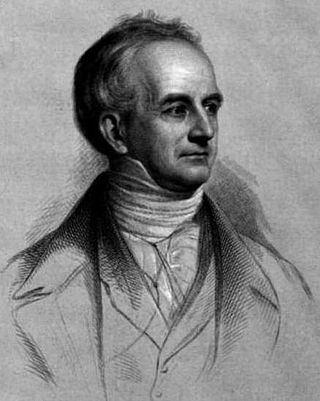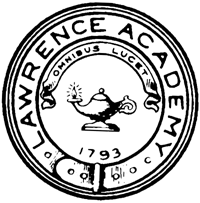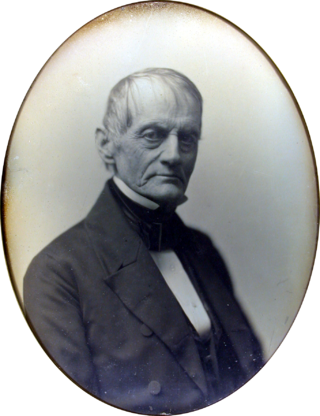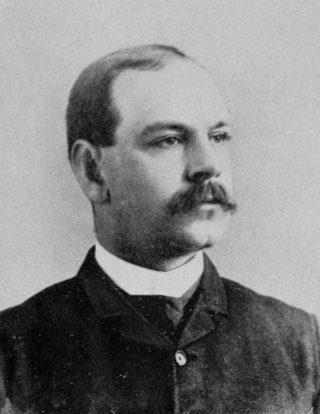
Ralph Adams Cram was a prolific and influential American architect of collegiate and ecclesiastical buildings, often in the Gothic Revival style. Cram & Ferguson and Cram, Goodhue & Ferguson are partnerships in which he worked. Cram was a fellow of the American Institute of Architects.

The Boston Brahmins or Boston elite are members of Boston's historic upper class. In the late 19th century through the mid-20th century, they were often associated with a cultivated New England accent, Harvard University, Anglicanism, and traditional British-American customs and clothing. Descendants of the earliest English colonists are typically considered to be the most representative of the Boston Brahmins. They are considered White Anglo-Saxon Protestants (WASPs).

Abbott Lawrence was an American businessman, politician, and philanthropist. He was among the group of industrialists that founded a settlement on the Merrimack River that would later be named for him, Lawrence, Massachusetts.

Lawrence Academy at Groton is a private, nonsectarian, co-educational college-preparatory boarding school located in Groton, Massachusetts. Founded in 1792 as Groton Academy and chartered in 1793 by Governor John Hancock, Lawrence is the tenth-oldest boarding school in the United States and the third-oldest in Massachusetts, following The Governor's Academy (1763) and Phillips Academy at Andover (1778).

Amos Lawrence was an American merchant and philanthropist.

The Boston Associates were a loosely linked group of investors in 19th-century New England. They included Nathan Appleton, Patrick Tracy Jackson, Abbott Lawrence, and Amos Lawrence. Often related directly or through marriage, they were based in Boston, Massachusetts. The term "Boston Associates" was coined by historian and professor of economics and Marxism, Vera Shlakman in her 1935 work, Economic History of a Factory Town, A Study of Chicopee, Massachusetts.

Peter Chardon Brooks Adams was an American attorney, historian, political scientist and a critic of capitalism.

Amos Adams Lawrence was an American businessman, philanthropist, and social activist. He was a key figure in the United States abolitionist movement in the years leading up to the Civil War and the growth of the Episcopal Church in Massachusetts. He was instrumental in the establishment of the University of Kansas and Lawrence University in Appleton, Wisconsin.
Samuel Lawrence was an American revolutionary from Groton, Massachusetts.
Esther Louise Forbes was an American novelist, historian and children's writer who received the Pulitzer Prize and the Newbery Medal. She was the first woman elected to membership in the American Antiquarian Society.

Sir Charles George Douglas Roberts was a Canadian poet and prose writer. He was one of the first Canadian authors to be internationally known. He published various works on Canadian exploration and natural history, verse, travel books, and fiction." He continued to be a well-known "man of letters" until his death.

Jeremiah Mason was a United States senator from New Hampshire.

William Lawrence was elected as the 7th Bishop of the Episcopal Diocese of Massachusetts (1893–1927). Lawrence was the son of the notable textile industrialist Amos Adams Lawrence and a member of the influential Boston family, founded by his great-grandfather and American revolutionary, Samuel Lawrence. His grandfather was the famed philanthropist Amos Lawrence.
Frederic Cunningham Lawrence was a suffragan bishop of the Diocese of Massachusetts (1956–1968).

William Appleton was an American businessman and politician from Massachusetts. He was a trader, shipowner, and banker, and served as a U.S. representative from Massachusetts from 1851 to 1855, and again from 1861 to 1862.

Samuel Abbott Green was an American physician-turned-politician from Massachusetts who served as a medical officer during the American Civil War and as mayor of Boston in 1882. He was an elected member of the American Philosophical Society.

William Andrus Alcott, also known as William Alexander Alcott, was an American educator, educational reformer, physician, vegetarian and author of 108 books. His works, which include a wide range of topics including educational reform, physical education, school house design, family life, and diet, are still widely cited today.

William Amos Bancroft was a Massachusetts businessman, soldier and politician who served in the Massachusetts House of Representatives and on the Common Council, Board of Aldermen, and as the Mayor of Cambridge, Massachusetts (1893–1897).
Edward Augustus Holyoke Hemenway was an American self-made merchant from Boston, Massachusetts.

The Lawrence family is a Boston Brahmin family, also known as the "first families" of Boston, who arrived in Watertown, Massachusetts from Wissett, England in 1635.
















